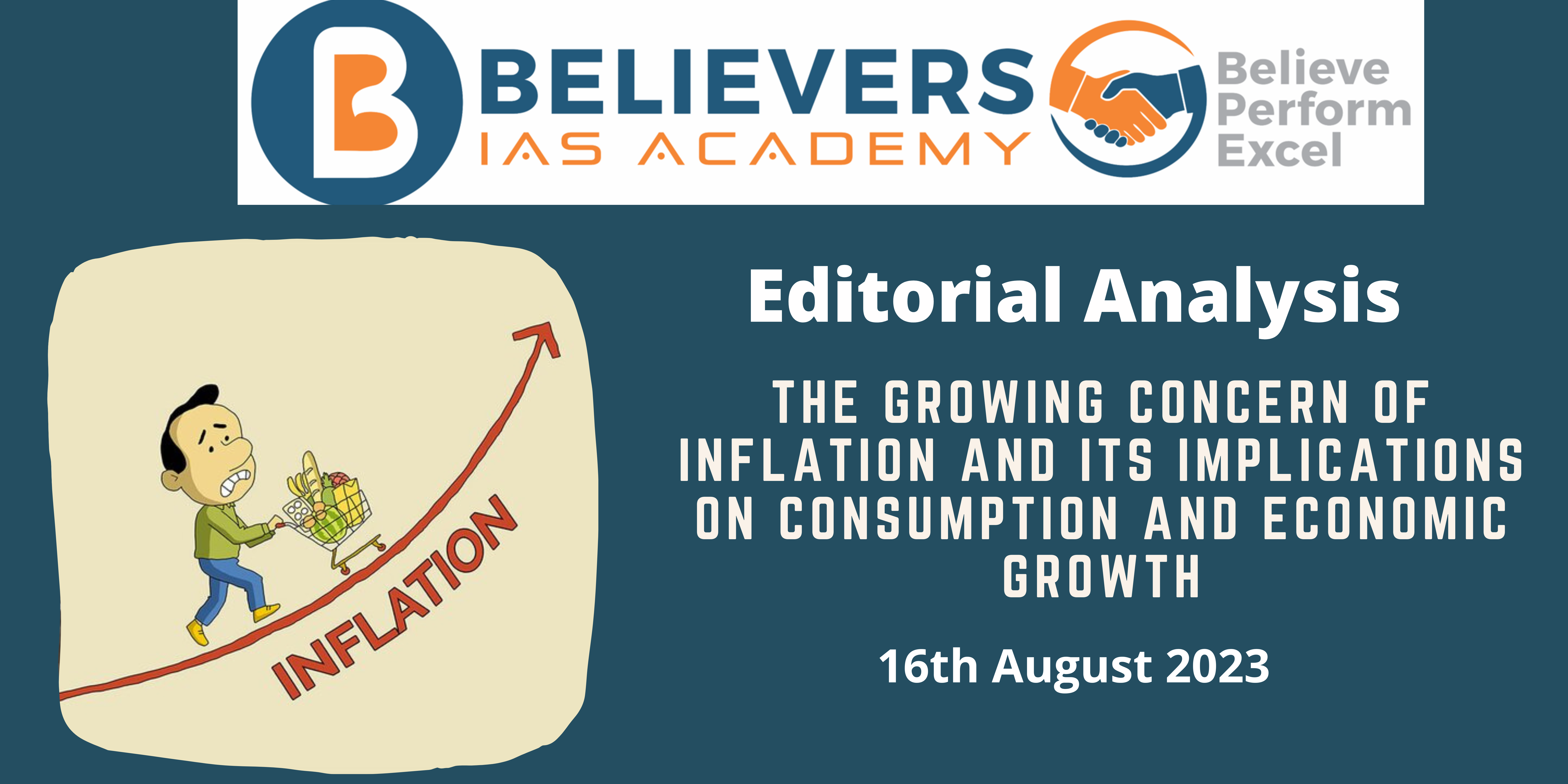The Growing Concern of Inflation and Its Implications on Consumption and Economic Growth
Context:
The recent data released by the National Statistical Office (NSO) has drawn attention to a concerning surge in retail inflation, reaching a 15-month peak. This revelation follows closely on the heels of the Reserve Bank of India’s (RBI) decision to keep interest rates unchanged, coupled with its alert about the potential for a substantial rise in headline inflation in the near future.
Relevance:
GS-03 (Indian Economy- Inflation, Monetary Policy, RBI)
Prelims:
- Repo rate
- Reverse repo
- Monetary policy
- RBI
Mains Question:
- Discuss the recent trends in retail inflation and their potential impact on broader consumption and economic growth. (150 words)
Dimensions of the article:
- Factors Driving Inflation and Their Impact
- Inflation Expectations and Monetary Policy Implications
Factors Driving Inflation and Their Impact
- Food Component Surge: The cornerstone of this inflationary surge is the food component, particularly conspicuous with the Consumer Food Price Index’s unprecedented surge. This index has undergone a mind-boggling increase of 696 basis points, reaching 11.51% from June’s moderate 4.55%.
- Vegetables at the Forefront: Within the food component, vegetables have staged an astonishing ascent in inflation rates, registering a year-on-year increase of 37.3%, coupled with a month-on-month escalation of 38.1% in July. Tomato prices, in particular, have catapulted by an astounding 214% from June’s rates, making it evident that the surge is reaching vertiginous heights.
- Non-Food Inflation: Beyond the sphere of food, inflation has cast its net over non-food items as well. All five broad groups within the CPI have shown sequential price increases, highlighting the expanded reach of inflation across the spectrum of goods and services consumed in the economy.
Inflation Expectations and Monetary Policy Implications:
- The Reserve Bank of India’s optimism regarding the transitory nature of the price shock, allowing for some tolerance towards elevated headline inflation, appears to be tested in the face of these runaway price escalations. The risk of inflation expectations becoming unanchored is now more pronounced than ever.
- With the imminent prospect of El Niño and erratic monsoon patterns casting uncertainty over the forthcoming agricultural produce supply, the RBI’s task of steering inflation towards its targeted 4% benchmark becomes a formidable challenge.
- The need for a coordinated effort among all authorities to rein in inflation becomes apparent, as unchecked inflation threatens not only to undermine consumption but also poses a significant risk to overall economic growth.
Way Forward:
- In light of the escalating inflationary pressures, a concerted approach is imperative. Policymakers, regulatory bodies, and the agricultural sector must collaborate to address this mounting challenge.
- Immediate steps should encompass comprehensive measures to stabilize vegetable prices, enhancing production capacities, and diversifying agricultural practices.
- Adopting pragmatic monetary policies that consider the volatile market dynamics and their repercussions is essential to maintain inflationary expectations within reasonable limits.
Conclusion:
- The recent surge in retail inflation, propelled predominantly by surging food prices, signals a cause for concern. The unprecedented escalation in vegetable prices, combined with the broader reach of inflation, necessitates a collective and proactive response. The Reserve Bank of India, in conjunction with various stakeholders, must navigate the complex terrain of inflation management to secure both consumption patterns and economic growth trajectories. Ultimately, striking this balance will be instrumental in safeguarding the stability and resilience of the economy in the face of mounting inflationary pressures.




